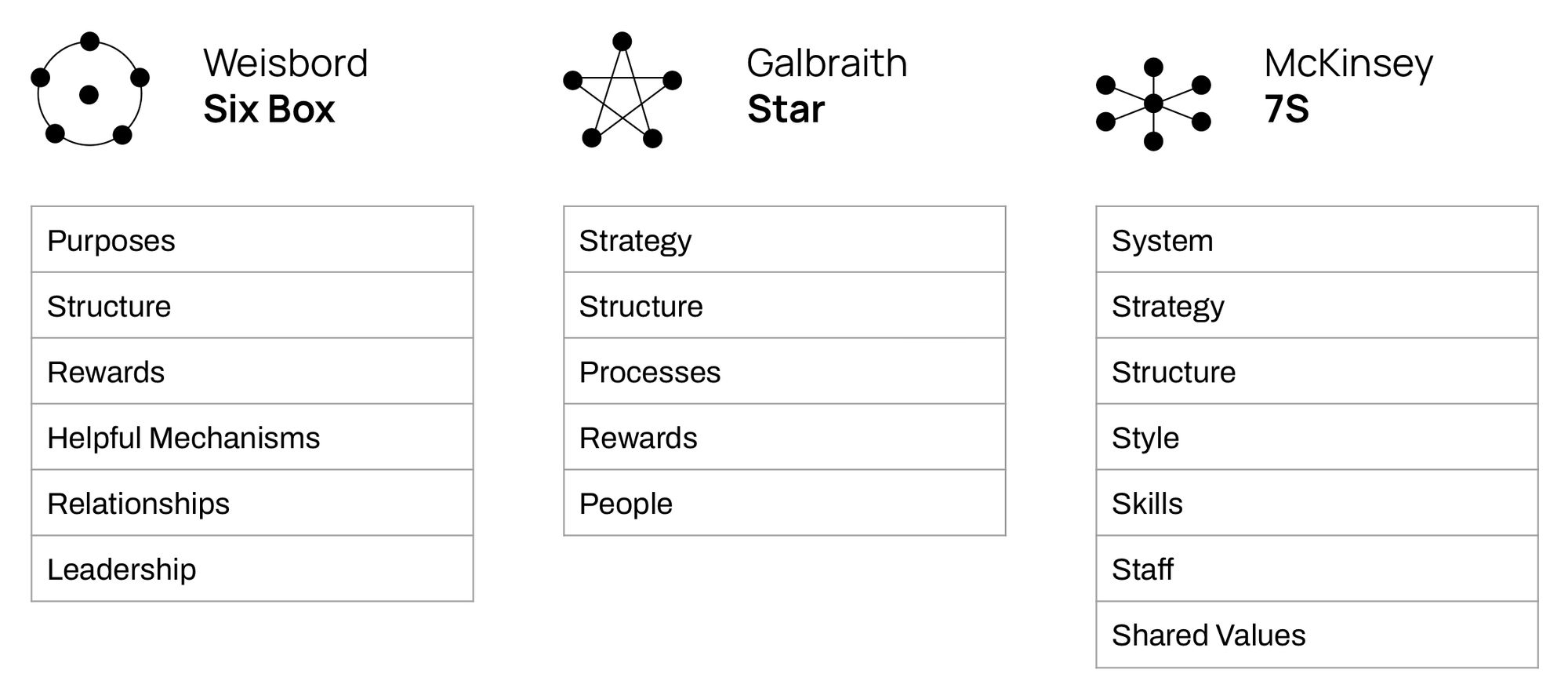Why is it needed?
Most org design is done by people without training
Most of the org design frameworks are for execs

To add: an explainer on the existing models, including their history and use.
The existing models are good, useful tools for diagnosis and design. When cooking this up, I had two main issues that I wanted to address.
The models are all pretty old! They all predate the information revolution at work, which means they‘re good for understanding the organizations we have today, but less instructive for building the organizations we’ll need tomorrow. I wanted something that spoke to the animating ideas of the next generation of work: Purpose; Networks; Empowerment; Experimentation; Transparency. (The even more simplified version of this that we used at August was Open Learning Networks, which I think you’ll see is pretty directly carried through in the model below.)
Each of the attributes in the existing models are important, but othering. With a few exceptions (e.g. relationships/relating and leadership/leading), they’re about things. And those things are far from the work. It always seems to set up a dynamic where folks are heckling the organization en masse. Those people don't have the right skills. The strategy is wrong. This process is broken. I wanted a model that could be about things and activities, to create a new dynamic for OD that gets closer to the work. (Another side note: this is even worse with ideas like “People/Process/Tools,” which almost everyone understands to mean “We need new people, new process, and new tools.”)
We can decode an organization or team to find its hidden secrets – revealing what needs fixing, and what should stay the same. We can recode an organization or team to get more of what we want and less of what we don’t.
Last updated
Was this helpful?